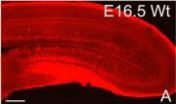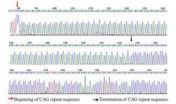(Press-News.org) The melting of a rather small ice volume on East Antarctica's shore could trigger a persistent ice discharge into the ocean, resulting in unstoppable sea-level rise for thousands of years to come. This is shown in a study now published in Nature Climate Change by scientists from the Potsdam Institute for Climate Impact Research (PIK). The findings are based on computer simulations of the Antarctic ice flow using improved data of the ground profile underneath the ice sheet.
"East Antarctica's Wilkes Basin is like a bottle on a slant," says lead-author Matthias Mengel, "once uncorked, it empties out." The basin is the largest region of marine ice on rocky ground in East Antarctica. Currently a rim of ice at the coast holds the ice behind in place: like a cork holding back the content of a bottle. While the air over Antarctica remains cold, warming oceans can cause ice loss on the coast. Ice melting could make this relatively small cork disappear – once lost, this would trigger a long term sea-level rise of 300-400 centimeters. "The full sea-level rise would ultimately be up to 80 times bigger than the initial melting of the ice cork," says co-author Anders Levermann.
"Until recently, only West Antarctica was considered unstable, but now we know that its ten times bigger counterpart in the East might also be at risk," says Levermann, who is head of PIK's research area Global Adaptation Strategies and a lead-author of the sea-level change chapter of the most recent scientific assessment report by the Intergovernmental Panel on Climate Change, IPCC. This report, published in late September, projects Antarctica's total sea level contribution to be up to 16 centimeters within this century. "If half of that ice loss occurred in the ice-cork region, then the discharge would begin. We have probably overestimated the stability of East Antarctica so far," says Levermann.
Emitting greenhouse-gases could start uncontrollable ice-melt
Melting would make the grounding line retreat – this is where the ice on the continent meets the sea and starts to float. The rocky ground beneath the ice forms a huge inland sloping valley below sea-level. When the grounding line retreats from its current position on a ridge into the valley, the rim of the ice facing the ocean becomes higher than before. More ice is then pushed into the sea, eventually breaking off and melting. And the warmer it gets, the faster this happens.
Complete ice discharge from the affected region in East Antarctica takes five thousand to ten thousand years in the simulations. However, once started, the discharge would slowly but relentlessly continue until the whole basin is empty, even if climate warming stopped. "This is the underlying issue here", says Matthias Mengel. "By emitting more and more greenhouse gases we might trigger responses now that we may not be able to stop in the future." Such extensive sea level rise would change the face of planet Earth – coastal cities such as Mumbai, Tokyo or New York are likely to be at risk.
INFORMATION:
Article: Mengel, M., Levermann, A. (2014): Ice plug prevents irreversible discharge from East Antarctica. Nature Climate Change (online) [DOI: 10.1038/NCLIMATE2226]
Weblink to the article: http://www.nature.com/nclimate/journal/vaop/ncurrent/full/nclimate2226.html
Related article: Levermann, A., Bamber, J., Drijfhout, S., Ganopolski, A., Haeberli, W., Harris, N.R.P., Huss, M., Krüger, K., Lenton, T., Lindsay, R.W., Notz, D., Wadhams, P., Weber, S. (2012): Potential climatic transitions with profound impact on Europe - Review of the current state of six 'tipping elements of the climate system'.
Climatic Change 110 (2012), 845-878, [DOI 10.1007/s10584-011-0126-5]
Weblink to the related article: http://link.springer.com/article/10.1007%2Fs10584-011-0126-5
For further information please contact:
PIK press office
Phone: +49 331 288 25 07
E-Mail: press@pik-potsdam.de
Twitter: @PIK_Climate
Uncorking East Antarctica yields unstoppable sea-level rise
2014-05-05
ELSE PRESS RELEASES FROM THIS DATE:
Dual method to remove precancerous colon polyps may substantially reduce health-care costs
2014-05-05
Chicago, IL (May 5, 2014) — A surgical method combining two techniques for removing precancerous polyps during colonoscopies can substantially reduce the recovery time and the length of hospital stays, potentially saving the health-care system millions of dollars, according to research presented today at Digestive Disease Week® (DDW).
"Not only did we find that patients were discharged a day and a half earlier, we discovered other benefits, which could transform our approach to removing difficult colon polyps," said Jonathan Buscaglia, MD, the study's lead researcher ...
Women and PAD: Excellent treatment outcomes in spite of disease severity
2014-05-05
ANN ARBOR, Mich. – Women face greater limits on their lifestyle and have more severe symptoms as a result of peripheral artery disease (PAD), but minimally invasive procedures used to unclog arteries are just as successful as in men.
The success of procedures, such as angioplasty or stent placement, in treating women with leg PAD was revealed in a Journal of the American College of Cardiology study.
The study provides a rare look at gender differences in PAD. PAD happens when fatty deposits build up in arteries outside the heart, usually the arteries supplying fresh ...
Cajal-Retzius cell loss and amyloidosis in Alzheimer's disease
2014-05-05
Cajal-Retzius cells are reelin-secreting neurons in the marginal zone of the neocortex and hippocampus. However, the relationship between Cajal-Retzius cells and Alzheimer's disease is unknown. Dr. Jinbo Deng and team from Henan University in China revealed that the number of Cajal-Retzius cells markedly reduced with age in both wild type and in mice over-expressing the Swedish double mutant form of amyloid precursor protein 695 (transgenic (Tg) 2576 mice). The decline in Cajal-Retzius cells in Tg2576 mice was found to occur concomitantly with the onset of Alzheimer's disease ...
New knowledge about muscular dystrophy
2014-05-05
The most common form of muscular dystrophy among adults is dystrophia myotonica type 1 (DM1), where approximately 1 in every 8000 is affected by the disease. The severity of the disease varies from mild forms to severe congenital forms. It is dominantly inherited and accumulates through generations, gaining increased severity and lowered age of onset. DM1 is characterised by accumulating toxic aggregates of ribonucleic acids (RNA) from a specific mutated gene (see figure 1).
When this RNA, which contains thousands of CUG nucleotide repeats, builds up in the cell, it attracts ...
Genetic diagnosis can rule out a suspected Huntington's chorea patient
2014-05-05
Huntington's disease is an autosomal-dominant inherited neurodegenerative disease with a distinct phenotype, but the pathogenesis is unclear. Although patients with a family history have more typical clinical symptoms, signs, and pathological changes, as well as an unambiguous clinical diagnosis, other diseases with dance-like movements, e.g., dentatorubral-pallidoluy-sian atrophy, spinocerebellar ataxia type 17, Huntington's disease-like-2, and neuroferritinopathy, are difficult to identify and distinguish from Huntington's disease. By mutation screening for CAG repeats ...
Animal hoarding, a lesser-known problem for public health and welfare
2014-05-05
Animal hoarding is a psychiatric disorder that consists of accumulating large numbers of animals at home, usually cats and dogs, without providing them with a minimal standard of care. Researchers from IMIM (Hospital del Mar Research Institute) publish the first European study to provide data on this disorder, in the Journal Animal Welfare. The disorder is still largely unknown and has a negative effect on the health of both the people who suffer from it and the animals involved.
"This is the first step towards public recognition of this disorder, a disorder that constitutes ...
Nanoengineers develop basis for electronics that stretch at the molecular level
2014-05-05
Nanoengineers at the University of California, San Diego are asking what might be possible if semiconductor materials were flexible and stretchable without sacrificing electronic function?
Today's flexible electronics are already enabling a new generation of wearable sensors and other mobile electronic devices. But these flexible electronics, in which very thin semiconductor materials are applied to a thin, flexible substrate in wavy patterns and then applied to a deformable surface such as skin or fabric, are still built around hard composite materials that limit their ...
Minneapolis Heart Institute Foundation implants its 1st world's smallest cardiac pacemaker
2014-05-05
MINNEAPOLIS, MN – May 1, 2014 – The Minneapolis Heart Institute Foundation (MHIF) announced today the first implant of the world's smallest pacemaker at the Minneapolis Heart Institute. The device was implanted as part of a global clinical trial and the procedure was the first of its kind in the Midwest.
One-tenth the size of a conventional pacemaker, and comparable in size to a large vitamin, the Medtronic Micra™ Transcatheter Pacing System is delivered directly into the heart through a catheter inserted in the femoral vein. Once positioned, the pacemaker is securely ...
Penn study shows stimulant drug may help women cope with post-menopausal memory lapses
2014-05-05
NEW YORK – Menopausal women have long reported experiencing hot flashes, mood swings, night sweats and memory lapses, too.
A new study from researchers in the Perelman School of Medicine at the University of Pennsylvania shows preliminary evidence that the psychostimulant drug lisdexamfetamine (LDX) can aid post-menopausal women by improving attention and concentration, organization, working memory and recall. The findings will be presented by C. Neil Epperson, MD, director of the Penn Center for Women's Behavioral Wellness, on Tuesday during the American Psychiatric ...
Inbred wolves struggle, moose proliferate at Isle Royale National Park
2014-05-05
During their annual Winter Study at Isle Royale National Park, scientists from Michigan Technological University counted nine wolves organized into one breeding pack and a second small group that is a remnant of a formerly breeding pack.
In the Isle Royale Wolf-Moose Study’s annual report released today, the researchers say that over the past three years, they have tallied the lowest numbers of wolves ever: nine in 2011–12, eight in 2012–13 and nine in 2013–14. During the same period, predation rates—the proportion of the moose population killed by wolves—also dropped ...





